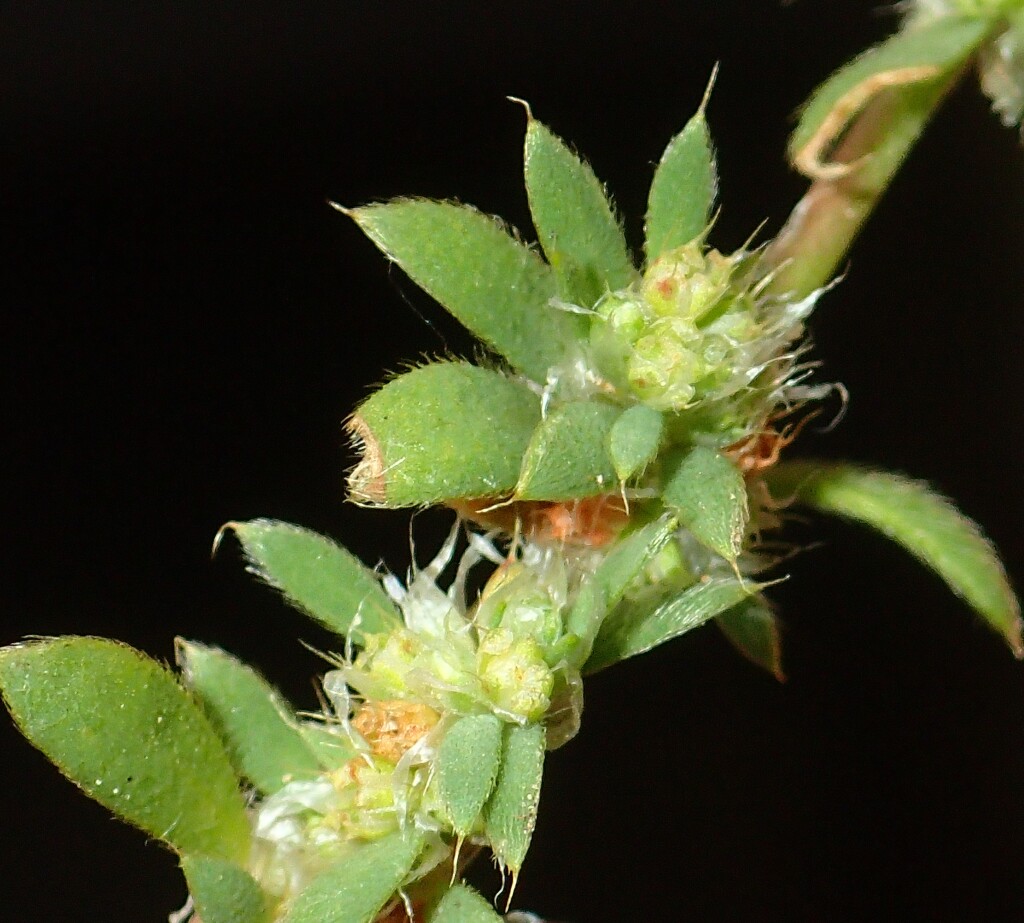Paronychia brasiliana
DC. Whitlow WortPerennial with woody taproot; more or less pubescent. Stems prostrate, much-branching from base, to 27 cm long, internodes more or less retrorse-puberulent. Leaves sessile, linear-oblong or elliptic to oblanceolate, to 8.5 mm long and 2.5 mm wide, acute, mucronate, densely scabrid-strigose; stipules acuminate, c. half the length of leaves. Inflorescence profuse, pseudo-axillary; bracts acuminate, usually not concealing flowers. Flowers 1.5–1.75 mm long; pedicels very short; calyx more or less chestnut-brown, glabrous or rarely sparsely ciliate near base, sepals obovate-oblong, strongly hooded, 1–1.4 mm long, with narrow membranous margins and slender, smooth, spreading awn 0.4–0.8 mm long; petals absent. Achene sub-globose, c. 1 mm long; seeds reddish-brown, more or less glossy, finely punctate, 0.7–0.8 mm diam. Flowers mainly Aug.–Mar.
MuM, VVP, VRiv, MuF, GipP, CVU, EGL. Also naturalised SA, Qld, NSW, Norfolk Is., Macquarie Is., South Africa. Native to Argentina, Brazil, Uruguay. Widespread weed of disturbed soils, lawns and waste ground.
Adams, L.G. (1996). Caryophyllaceae. In: Walsh, N.G.; Entwisle, T.J., Flora of Victoria Vol. 3, Dicotyledons Winteraceae to Myrtaceae, pp. 228–271. Inkata Press, Melbourne.
 Spinning
Spinning



